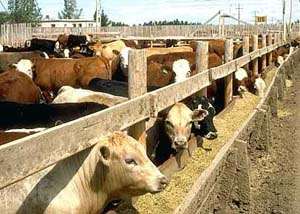
The US Department of Agriculture today, released the latest Cattle on Feed and Cold Storage reports. Dr. Derrell Peel, Oklahoma State University livestock market economist, to get his initial response to the numbers.
“I think this report will be viewed a little bit negatively,” Peel said. “Hard to predict how the market might react to it.”
According to the report, cattle and calves on feed for the slaughter market in the United States for feedlots with capacity of 1,000 or more head totaled 10.9 million head on April 1, 2017. The inventory was slightly above April 1, 2016. The inventory included 7.23 million steers and steer calves, down 2 percent from the previous year. This group accounted for 66 percent of the total inventory. Heifers and heifer calves accounted for 3.67 million head, up 5 percent from 2016.
“I think if you were going to identify a surprise here though,” Peel said, “it would be the placements.”
Placements in feedlots during March totaled 2.10 million head, 11 percent above 2016. Placements were the highest for March since the series began in 1996. Net placements were 2.05 million head. During March, placements of cattle and calves weighing less than 600 pounds were 350,000 head, 600-699 pounds were 295,000 head, 700-799 pounds were 620,000 head, 800-899 pounds were 585,000, 900-999 pounds were 185,000, and 1,000 pounds and greater were 67,000 head.
According to Peel, the fact that placements rose above expectations to level detailed above, is indicative of the industry’s response to markets being better than anticipated at this time.
“I think it reflects a couple of things,” Peel contended. “Obviously, it reflects just a general growing supply of feeder cattle. But more importantly, it reflects the fact that when you look at the change in improvements for feedlot profitability - looks much better.”
Marketings of fed cattle during March, indicate a very current and aggressive market, totaling 1.91 million head, 10 percent above 2016.
“Some people have probably overlooked the marketings numbers for the last several months,” Peel proposed. “I think what we’ve done over the last six to eight months with marketings is what really sets up this strong cattle market we have today.”